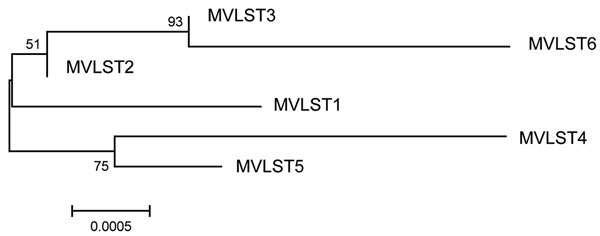Volume 22, Number 3—March 2016
Dispatch
Far East Scarlet-Like Fever Caused by a Few Related Genotypes of Yersinia pseudotuberculosis, Russia
Figure 1

Figure 1. Maximum-likelihood tree generated with concatenated multivirulence locus sequence type (MVLST) sequences for study of Far East scarlet-like fever caused by a clonal group of Yersinia pseudotuberculosis, Russia. Reliability values for the branching nodes are indicated. Branch lengths and scale bar indicate distances measured in terms of the proportion of nucleotide substitutions between sequences.
1These authors were co–principal investigators.
Page created: February 18, 2016
Page updated: February 18, 2016
Page reviewed: February 18, 2016
The conclusions, findings, and opinions expressed by authors contributing to this journal do not necessarily reflect the official position of the U.S. Department of Health and Human Services, the Public Health Service, the Centers for Disease Control and Prevention, or the authors' affiliated institutions. Use of trade names is for identification only and does not imply endorsement by any of the groups named above.